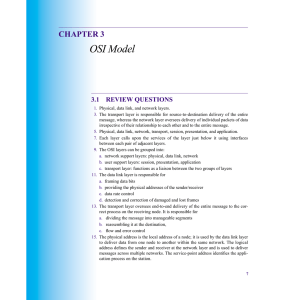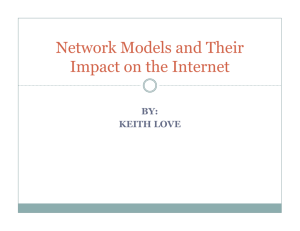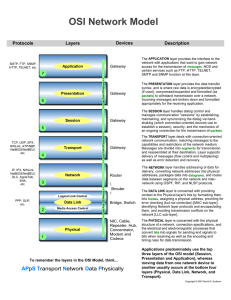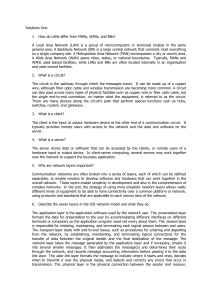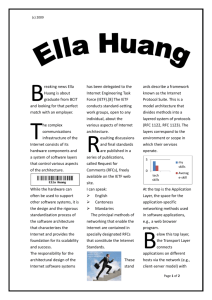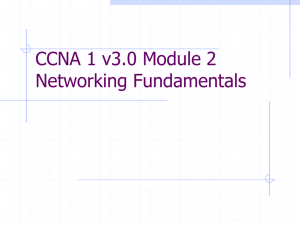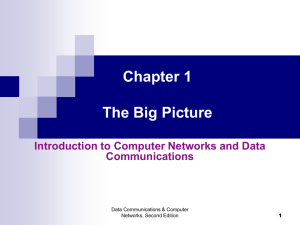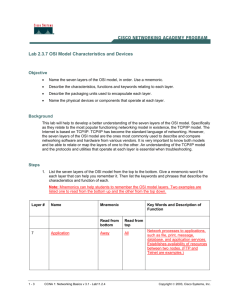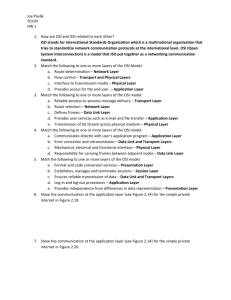assignment01 - NOVA Student Web
advertisement
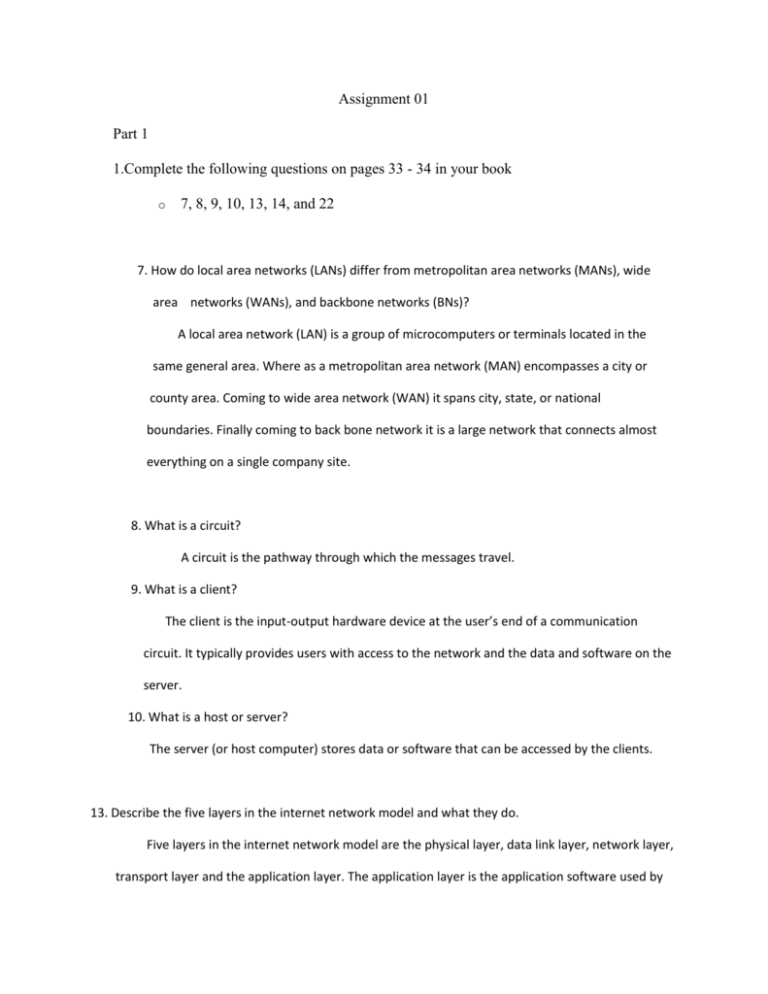
Assignment 01 Part 1 1.Complete the following questions on pages 33 - 34 in your book o 7, 8, 9, 10, 13, 14, and 22 7. How do local area networks (LANs) differ from metropolitan area networks (MANs), wide area networks (WANs), and backbone networks (BNs)? A local area network (LAN) is a group of microcomputers or terminals located in the same general area. Where as a metropolitan area network (MAN) encompasses a city or county area. Coming to wide area network (WAN) it spans city, state, or national boundaries. Finally coming to back bone network it is a large network that connects almost everything on a single company site. 8. What is a circuit? A circuit is the pathway through which the messages travel. 9. What is a client? The client is the input-output hardware device at the user’s end of a communication circuit. It typically provides users with access to the network and the data and software on the server. 10. What is a host or server? The server (or host computer) stores data or software that can be accessed by the clients. 13. Describe the five layers in the internet network model and what they do. Five layers in the internet network model are the physical layer, data link layer, network layer, transport layer and the application layer. The application layer is the application software used by the network user. The transport layer takes the message generated by the application layer and, if necessary, breaks it into several smaller messages. The network layer addresses the message and determines its route through the network. The data link layer formats the message to indicate where it starts and ends, decides when to transmit it over the physical media, and detects and corrects any errors that occur in transmission. The physical layer is the physical connection between the sender and receiver, including the hardware devices (e.g., computers and modems) and physical media (e.g., cables and satellites). 14. Explain how a message is transmitted from one computer to another using layers. Each computer in the network has software that operates at each of the layers and performs the functions required by those layers. Each layer in the network uses a formal language, or protocol, that is simply a set of rules that define what the layer will do and that provides a clearly defined set of messages that software at the layer needs to understand. In general , all messages sent in a network pass through all layers. 22. Why has the internet model replaced the Open System Interconnection Reference (OSI) model? Although the OSI model is the most talked about network model, the one that dominates current hardware and software is a simpler five-layer Internet model. Unlike the OSI model that was developed by formal committees, the Internet model evolved from the work of thousands of people who developed pieces of the Internet. Part 2 2.Complete the following exercises on page 34 in your book o 1-6 and 1-8 1-6 Use the Web to search the Internet Engineering Task (IETF) Web Site(www.ietf.org). Describe one standard that is in the request for comment (RFC) stage. The RFC (Request for Comments) series contains technical and organizational documents about the Internet, including the technical specifications and policy documents produced by the Internet Engineering Task Force (IETF). 2005-10-17 draft-ietf-sipping-app-interaction-framework-05.txt EDIT REF draft-ietf-sip-gruu IN-QUEUE J. Rosenberg A Framework for Application Interaction in the Session Initiation Protocol (SIP) Bytes: 94672 Working Group: Session Initiation Proposal Investigation 1-8 Investigate the provider of VOIP phone service using the Internet (e.g., Vonage.com). What services do they provide and what pricing plan do they have for residential users? Residential premium unlimited plan for $24.99 /month. It includes local and long distance calling anywhere in the US, Canada and Puerto Rico. Free calls to 5 select European countries. They also have residential Basic 500 minutes plan for $14.99 a month. 500 outgoing minutes of local and long distance calling anywhere in the US, Canada, and Puerto Rico. Only 3.9cents per minute after the first 500 monthly minutes. Incoming calls are free. Both plans has 25 calling features like call waiting, voicemail and caller ID included. Can’t wait to have this service; All you need to have broadband internet connection and a US or Puerto Rico shipping address(no PO boxes). Their service was great and the call clarity was crystal clear for this amazing low price. Part 3 Search the Internet and find five sites that discusses the Internet Model. Read the information on the sites and as a response, give me URLs to the five sites a.http://en.wikipedia.org/wiki/TCP/IP#Layers_in_the_Internet_Protocol_Suite b. http://en.wikipedia.org/wiki/TCP/IP_model c. http://www.informit.com/articles/article.aspx?p=680842 d. http://highered.mcgraw-hill.com/sites/dl/free/0072515848/93764/foro38261prefacepms.pdf e. http://keppanet.netfirms.com/keppanet/networks/tcpipmod.htm

